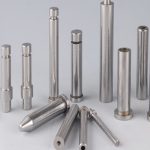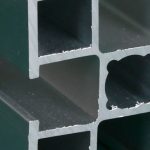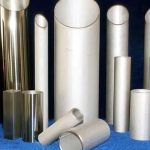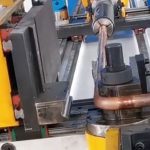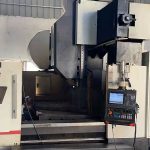The difficulty of manufacturing high-end bearings
|
The bearing is an indispensable core component in mechanical equipment. Its main function is to support the mechanical rotating body, reduce the friction coefficient and ensure the rotation accuracy. It is the product of mathematical physics and other theories plus materials science, heat treatment technology, precision machining and numerical control technology. Regardless of aircraft, automobile, high-speed rail or high-precision machine tools, all rotating parts generally require bearings. When other mechanical parts move relative to each other on the shaft, the mechanical parts used to maintain the central position of the shaft and control the movement are called bearings. It can be used for the mutual rotation of the rotating shaft to minimize the friction force generated when the rotating shaft rotates. |
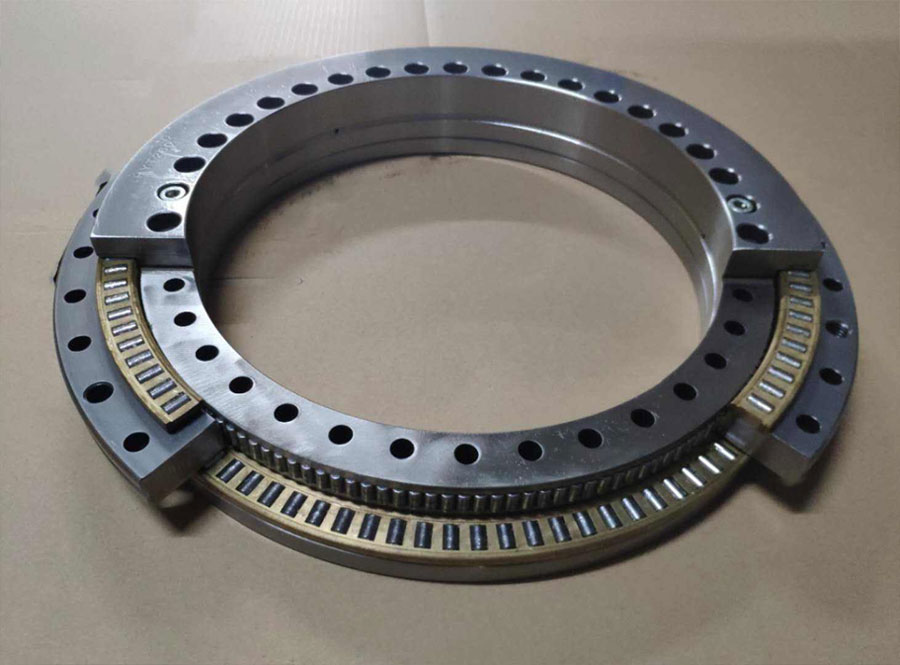
01 In the early linear motion bearings, a row of wooden poles was placed under a skid.
This technique can be traced back to the time when the pyramid of Kafra was built, although there is no clear evidence yet. Modern linear motion bearings use the same principle of operation, but use rollers instead of rollers.
From heavy-duty wheel shafts and machine tool spindles to precision clock parts, rotary bearings are required in many applications. The simplest rotary bearing is a sleeve bearing. This design was subsequently replaced by rolling bearings, which used many cylindrical rollers to replace the original bushings. The earliest rolling bearing was invented by watchmaker John Harrison in 1760 to make the H3 timer.
An early example of ball bearings was found on an ancient Roman ship on Lake Naimi, Italy. A wooden ball bearing was used to support the rotating table. The ship was built in 40 BC. Among the immature factors of ball bearings, it is very important that the balls will collide, causing additional friction.
The first patent on the bearing ball channel was obtained by Philip Vaughn in 1794. In 1883, Friedrich Fisher proposed the use of suitable production machines to grind steel balls of the same size and accurate roundness, which laid the foundation for the creation of the bearing industry. In 1907, Sven Winquist of the SKF ball bearing factory designed the earliest modern self-aligning ball bearing.
According to the contact form of relative motion, bearings are divided into: ball bearings, needle bearings, tapered roller bearings, sliding bearings, flexible bearings, air bearings, magnetic suspension bearings, jewel bearings and oil-containing bearings.
02Although the structure of the bearing is simple
Many small workshops can make it, but the bearing has a high technical content, and it can even be used as an important standard to measure the national scientific and technological strength. Today’s world powers of science and technology, without exception, are powers of bearing R & D and manufacturing.
More than 70% of the world’s bearing market is occupied by the top ten multinational bearing group companies, of which the United States accounts for 23%, the European Union accounts for 21%, and Japan accounts for 19%. The world bearing market is basically dominated by five companies such as NSK in Japan, two companies including SKF in Sweden, FAG in Germany, and several companies such as Timken in the United States.
At the same time, the high-end market of the world’s bearing industry is monopolized by the aforementioned companies, while the low-end market is mainly concentrated in China. The 10 largest bearing companies in China, such as tile shafts, accounted for only 24.7% of the industry’s sales, and the top 30 production concentration was only 37.4%.
In recent years, China’s bearing industry has formed a set of independent and complete industrial systems. Regardless of bearing output or bearing sales, China has entered the ranks of the major bearing industry countries and ranks third in the world. The data shows that in 2017, the main business income of enterprises above designated size in China’s bearing industry was 178.8 billion yuan, and the bearing output was 21 billion sets. It can produce bearings ranging from 0.6 mm in inner diameter to 11 m in outer diameter, with a total of more than 90,000 specifications.
From 2006 to 2017, the growth of China’s bearing export value was relatively stable, and the growth rate was higher than that of imports. The import and export trade surplus showed an increasing trend. In 2017, the trade surplus reached 1.55 billion US dollars. Compared with the unit price of import and export bearings, the price difference between China’s import and export bearings has been relatively large in recent years, but the price difference has been decreasing year by year, reflecting that although the technical content of China’s bearing industry still has a certain gap with the advanced level, it is still catching up. At the same time, it reflects the current situation of overcapacity of low-end bearings and insufficient high-end bearings in China.
At present, the design and manufacturing technology of domestic bearings is basically imitated, the product development ability is low, and it is even blank in the research and development of certain core technologies. Although the matching rate for domestic mainframes has reached 80%, the supporting and maintenance bearings for important mainframes such as high-speed railway passenger cars, mid-to-high-end cars, computers, air conditioners, and high-level rolling mills basically rely on imports.
The development of domestic bearing manufacturing technology and process equipment technology is slow, the numerical control rate of turning is low, and the level of grinding automation is low. There are only more than 200 automatic production lines in the country. Advanced heat treatment processes and equipment that are critical to bearing life and reliability, such as controlled atmosphere protection heating, double refinement, and bainite quenching, have low coverage, and many technical problems have not been overcome.
The research and development of new bearing steel grades, the improvement of steel quality, and the development of related technologies such as lubrication, cooling, cleaning and abrasive tools have not been able to meet the requirements of bearing product levels and quality improvement.
Taking the most common deep groove ball bearing as an example, the actual life of foreign advanced products is generally more than 8 times the calculated life, up to more than 30 times, and the reliability is more than 98%.
The life of domestic bearings is generally 3 to 5 times the calculated life, and the reliability is about 96%. The gap is still very significant. For ordinary sports machinery, the problem is not too big. However, it is difficult to accept in the high-end field, so domestic aviation bearings, high-speed rail bearings, robot bearings, etc. are basically mainly imported bearings.
03High-speed rail, large aircraft, heavy-duty weapons and other high-end equipment have high-end bearings
but to meet the requirements of high-end bearings in terms of accuracy, performance, life and reliability, the quality and reliability of bearing materials are decisive factor.
Due to the high-speed rotation of the object, various parts of the bearing are subject to variable stress and high frequency. Generally, the pressure per unit area is as high as 1500 to 5000N per square millimeter. Under these factors, the bearing is prone to stress fatigue, which can cause fatigue peeling The bearing loses its function, and at the same time, the rolling bearing also needs to withstand factors such as centrifugal force, friction, high temperature, corrosion, etc. This also makes it necessary to use good steel to make the bearing.
Among the four major components of rolling bearings, except the retainer, the inner, outer ring, and rolling elements (balls, rollers, or needles) are composed of bearing steel, and the bearing steel is known as the “king of steel” Is the most demanding steel grade in steel production.
The quality of bearing steel mainly depends on the following four factors: one is the content, morphology, distribution and size of inclusions in the steel; the second is the content, morphology, distribution and size of carbides in the steel; the third is the central looseness in the steel Hole and center segregation; Fourth, the consistency of bearing steel product performance. These four factors can be summarized as indicators of purity and uniformity.
Among them, the purity requires that the inclusions in the material be as little as possible, the quality of the purity has a direct impact on the fatigue life of the bearing; while the uniformity requires the inclusions and carbide particles in the material to be fine and dispersed, which will affect the bearing Deformation and uniformity of structure after heat treatment in manufacturing.
Our country’s shaft manufacturing process is close to the world’s top level, but the material-that is, high-end bearing steel is almost entirely imported.
“PPM” is a unit of oxygen content in steelmaking, meaning parts per million or parts per million. Generally speaking, in the steel industry, 8 PPM steels are good steels; 5 PPM steels are top-grade steels, which are exactly what high-end bearings need.
The R & D, manufacturing and sales of high-end bearing steels are basically monopolized by the world’s bearing giants US Timken and Sweden SKF. A few years ago, they established bases in Yantai, Shandong and Jinan respectively, purchased low-end materials from China, used their core technology to make high-end bearings, and sold them to the Chinese market at ten times the price.
The addition of rare earth in the steelmaking process can make the original high-quality steel more “strong”. But how to add, this is the core secret of the world’s bearing giants.
Recently, the material machining simulation research team of the Institute of Metal Research of the Chinese Academy of Sciences has discovered that impurities are the main source of uneven composition through the physical dissection and calculation of large 100-ton single steel ingots. The special addition of technology to steel breaks through the technical bottleneck of the industrial application of rare earth in steel, and realizes the process forward and stable performance after adding rare earth to steel.
Taking Japanese NSK bearings as an example, it began to develop and manufacture bearings from specializing in basic science, with tribological technology, material technology, mechatronics technology and analytical technology as the four core technologies.
It is precisely because of this unparalleled R & D spirit that NSK has evolved from a Japanese machining company into a world-class bearing giant.
Our country has been able to make good steel, the next thing to do is how to apply it to bearings. High-end bearings also involve technical difficulties in materials, design, high-precision machining, bearing manufacturing, and some interdisciplinary subjects such as fatigue and damage , Lubrication, etc., so there is still a certain gap between China and high-end bearing technology.
Link to this article: The difficulty of manufacturing high-end bearings
Reprint Statement: If there are no special instructions, all articles on this site are original. Please indicate the source for reprinting:https://www.cncmachiningptj.com/,thanks!
 PTJ® provides a full range of Custom Precision cnc machining china services.ISO 9001:2015 &AS-9100 certified. 3, 4 and 5-axis rapid precision CNC machining services including milling, turning to customer specifications,Capable of metal & plastic machined parts with +/-0.005 mm tolerance.Secondary services include CNC and conventional grinding, drilling,die casting,sheet metal and stamping.Providing prototypes, full production runs, technical support and full inspection.Serves the automotive, aerospace, mold&fixture,led lighting,medical,bicycle, and consumer electronics industries. On-time delivery.Tell us a little about your project’s budget and expected delivery time. We will strategize with you to provide the most cost-effective services to help you reach your target,Welcome to Contact us ( [email protected] ) directly for your new project.
PTJ® provides a full range of Custom Precision cnc machining china services.ISO 9001:2015 &AS-9100 certified. 3, 4 and 5-axis rapid precision CNC machining services including milling, turning to customer specifications,Capable of metal & plastic machined parts with +/-0.005 mm tolerance.Secondary services include CNC and conventional grinding, drilling,die casting,sheet metal and stamping.Providing prototypes, full production runs, technical support and full inspection.Serves the automotive, aerospace, mold&fixture,led lighting,medical,bicycle, and consumer electronics industries. On-time delivery.Tell us a little about your project’s budget and expected delivery time. We will strategize with you to provide the most cost-effective services to help you reach your target,Welcome to Contact us ( [email protected] ) directly for your new project.
Link to this article:The difficulty of manufacturing high-end bearings
Reprint Statement: If there are no special instructions, all articles on this site are original. Please indicate the source for reprinting:Alloy Wiki,thanks!^^


